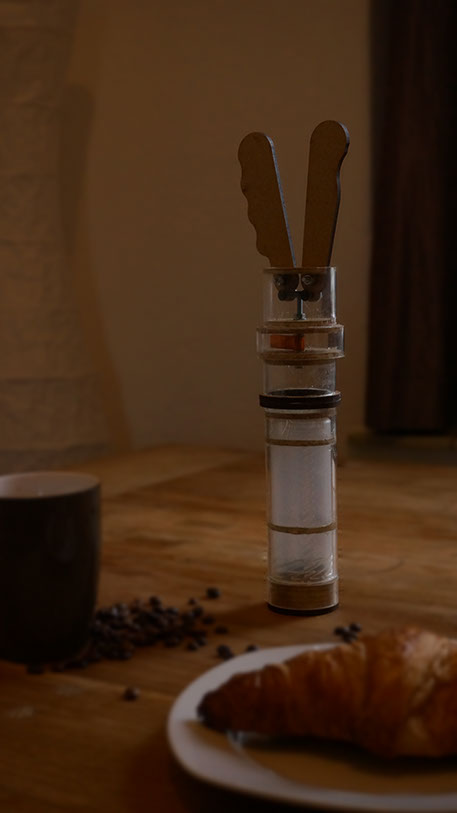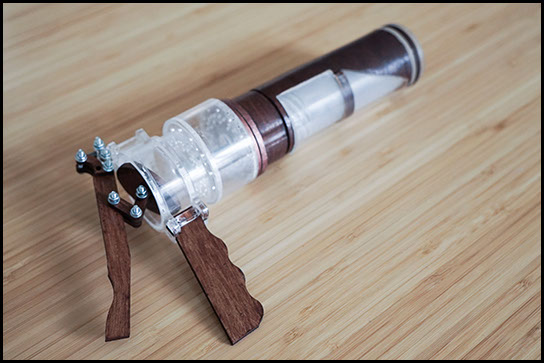GROWTH
WORK

TOTEM
Design for the Here & Now.
Find value in the mundane
Work with craftsmanship
Flow of interactions
Transparency of process
In collaboration with:
Luke van den Oudenhoven
Max Meulendijks
Sho Suzuki

Totem is a modular coffee press. Totems interactions focus on the relationship between the user and their ritual of making coffee. The form, function and interactions of the different stages of making coffee were analyzed with the Frogger Framework and translated into specialized modules. The interactions connect the user to the process of making coffee by putting emphasis on transparency, the flow of interactions and craftsmanship, allow the user to feel as though a crafter of their own coffee.
The final product features a grinder, filter and press module.
OVERVIEW
Elective: Design for the Here and Now.
Goal: Translate the values of an everyday ritual into an interaction focused design that brings the user in the here & now.
Competencies: TR, CA, US, TC, SDL
KEY LEARNING POINTS
1. Experience how design can give value to banal things (such as making coffee)
2. Introduction into applications of philosophy on interaction design, how interactions can embody abstract concepts; transparency; flow; craftsmanship.
3. Grow senstitivity for atmosphere and detail in design.
4. Understanding how every part of the real model translates the conceptual values
Explanation
To find meaning in our everyday we started by analyzing our own rituals. For me that was making a morning cofee. We made a video that captured the wholeness of the ritual, its atmosphere and the fine details of the interaction, such as the feeling of grinding, smell of the beans and the sound of filtering. I analyzed the interactions of that video and modeled the most interesting aspects (such as the resistance of grinding) in a variation of cardboard models. Coming together in a group, we decided on 3 main values and mapped the interactions with the Frogger Framework. This was the start of the process, further below is an overview of the steps and decisions we took.
Reflection
By analyzing simple, almost mundane everyday interactions, I realized that by making a product simple, there is more focus and attention on the actualality of that experience. It is spontaneus, judgeles, even bewildering. Simplicity allows for complex relations through openness and wholeness of interactions. In my FBP I relived this realization when trying to couple sound to motion in a simple way, embodied by technology.
Already being familiar with the frogger interaction framework, I worked on translating our 3 main values to actual interactions and realizing modeling in cardboard and modeling in SolidWorks. Explaining the Frogger Framework to teammates that were less familiar with it made me aware of every single inconstistency in my models. Iterating on the fine details, deepened my understanding of how every part of the real model translates to conceptual values. Discussing the core of the ritual with others further helped to distill the key values and leave the unnecessary details out.
Realizing a modular system for a liquid came with some challenges. Making seamless connections to prevent spillage required us to think about feasability. We had to consider materials, the connections and the exactness of the parts. I worked with 3d models to tweak moving parts precisely and we used a laser cutter and our own craftsmanship to create feasible, utilitarian design. This realization phase was a foresight into designing a real product. While I had the skills and perfection needed, this part of design is not what draws me to design and I find more personal meaning in precisely designing how a concept can be realized.


